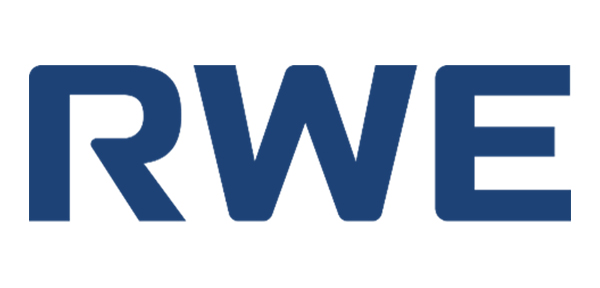Accelerating the delivery of solar energy
A global leader in renewable energy, RWE has completely automated the complex site selection process in the UK using Esri’s ArcGIS system. It has also significantly increased the efficiency of feasibility studies and project development processes to improve the success of planning applications and accelerate the delivery of new solar energy projects.
Automated site selection model , built with ArcGIS, saves up to 10 hours per search
ArcGIS-led feasibility assessments contribute to 98% success rate with planning applications
Project-specific ArcGIS web apps and mobile tools share 200 layers of data with 40+ employees
The Challenge
There is an urgent need for more solar energy to help the UK achieve its net zero target. However, it can take many years to find the right sites for solar energy installations, conduct feasibility studies, secure planning permissions and plan what are highly complex construction projects. RWE aimed to use geographic information system (GIS) technology to improve the efficiency of all these integrated planning processes, to help it deliver new solar energy projects more quickly.
“ArcGIS provides a secure and stable system for loading, manipulating and analysing planning constraints to help determine threats to developments.”
Ben Foster, Senior Analyst, RWE
The Solution
The company selected Esri’s ArcGIS and set about using solutions from this GIS system to completely transform key processes for solar energy development in the UK, from identifying sites to constructing and operating them.
In the initial phase, RWE now employs a bespoke site searching model, built with ArcGIS, that automatically qualifies and highlights viable land parcels for solar energy, located within a designated distance of available grid capacity. This model takes into account a wide range of potential planning constraints and landscape features, including agricultural land classification, archaeology, other nearby energy sites, ecology, flood risk, land cover, terrain and visibility.
Next RWE uses ArcGIS for running automated feasibility assessments and looking at sites in a lot more detail. By conducting geospatial analysis with ArcGIS, the company can identify high, medium and low risks to the planning process at each potential location. All available information is brought together on interactive maps, enabling sites to be thoroughly analysed and evaluated before site visits take place. “ArcGIS provides a secure and stable system for loading, manipulating and analysing planning constraints to help determine threats to developments,” comments Ben Foster, Senior Analyst at RWE.
When solar projects become active, RWE uses ArcGIS Web AppBuilder to quickly create project-specific web apps that are used by over forty employees across the business. These apps make it very easy for everyone to view up to 200 layers of project data, all in one place, and better visualise sites in 2D and 3D. RWE also uses ArcGIS Field Maps to create mobile tools for project teams that enable them to view, capture and edit data whilst in the field, and integrate additional content (such as pictures and videos) directly into the web app for everyone to see.
Additionally, the company has trialled the use of ArcGIS Hub and ArcGIS StoryMaps, on selected projects, to improve the quality of public websites and consultations. These interactive tools helped RWE to share information with the public in a more engaging and accessible way, and the company received positive feedback.
“With our project-specific ArcGIS web and mobile apps, our teams can collaborate and share data far more easily.”
Ben Foster, Senior Analyst, RWE
Benefits
Faster identification of potential sites
RWE has significantly reduced the amount of time required to identify suitable land for large-scale solar projects from 5-10 hours to 5-10 minutes. Staff do not have to spend a huge amount of time visiting multiple websites, comparing different data sets or making unnecessary site visits or speculative calls to landowners as all this background work is done for them. “Site selection used to be a long-winded process that was very costly on companies’ resources,” explains Foster. “Our integrated ArcGIS tools enable insightful, planning-led decision-making.”
More successful planning applications
Using ArcGIS, RWE can now conduct faster feasibility studies and focus more readily on sites with the fewest potential planning constraints that are more likely to achieve planning permission. As a result, the company is achieving exceptionally high levels of success and reducing the time wasted on unproceedable projects. “Our approach has helped RWE to secure planning permission for over 98% of the projects it has worked on,” says Foster. “ArcGIS has been an essential tool in streamlining land identification, optimising feasibility studies and enhancing collaboration, helping the team to achieve such a high success rate.”
Highly efficient project delivery
The ArcGIS web apps and mobile tools created for project teams have transformed collaboration and data sharing within the business, enabling RWE to plan new solar energy installations more efficiently. Data collected in the field is instantly available to the whole project team, and time is not lost looking for information. Foster observes, “With our project-specific ArcGIS web and mobile apps, our teams can collaborate and share data far more easily. ArcGIS makes the whole process much more efficient.”
Well-received public consultations
In initial pilots, RWE found that the use of ArcGIS StoryMaps really enhanced the public consultation process, by making information available to people in a format that they could easily query and understand. Initial surveys conducted after public consultations clearly showed that the StoryMap had been well received. Now RWE is considering using ArcGIS StoryMaps on future projects, as well as embedding ArcGIS mapping into public websites, to help people understand the impacts of proposed projects and appreciate additional benefits, such as biodiversity net gain.



